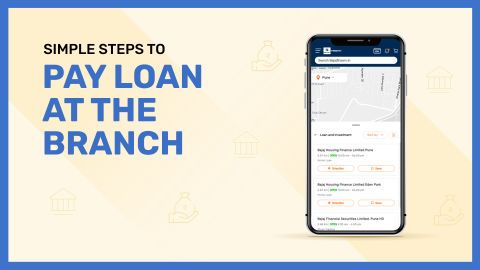The EMI due date for a CA Loan is an important aspect to understand, as it ensures the smooth repayment of your loan and avoids unnecessary penalties. Chartered Accountants (CAs) often need financial support to manage their professional and personal expenses, and a CA Loan can help in meeting these needs with flexible repayment options. The EMI due date is the specific date each month when the EMI (Equated Monthly Installment) is expected to be paid. Missing this date can lead to late fees and affect your credit score. Most lenders offer the flexibility to choose your EMI due date based on your cash flow, ensuring you have sufficient time to prepare. It's crucial to stay on top of your due date, and setting reminders or automating payments can help prevent delays. Understanding your EMI due date is key to managing your loan efficiently and maintaining good financial health.
Why Change the EMI Due Date for a CA Loan?
Changing the EMI due date for a CA (Chartered Accountant) Loan can offer significant advantages, allowing you to manage your finances better and avoid unnecessary complications. Here are some reasons why you might consider adjusting your EMI due date:
1. Align with Cash Flow
Chartered Accountants often experience fluctuating income due to the nature of their profession. For instance, payments from clients may not always be consistent each month. Changing your EMI due date to align with your cash flow can help ensure that you have enough funds in your account to meet the repayment requirements. This way, you can avoid the stress of paying EMIs during lean months.
2. Avoid Late Payment Fees
Missing the EMI due date can result in penalties and additional charges. By selecting a due date that better suits your financial schedule, you minimize the risk of missing the payment deadline. This adjustment can also protect your credit score, which may otherwise be negatively affected by late payments.
3. Improve Financial Planning
When you change the EMI due date to match your income cycle, it provides better control over your financial planning. You can ensure that other obligations, such as operational expenses or taxes, don’t overlap with the EMI, allowing you to manage your finances more efficiently.
4. Convenience and Flexibility
Many lenders provide flexibility in choosing an EMI due date. This convenience can relieve the pressure of adhering to a fixed schedule that might not suit your financial situation. With the ability to shift the due date, you have the option to select a date that works best for you, whether it's after a client payment or a specific date when funds are available.
5. Ease of Loan Management
Changing your EMI due date simplifies loan management, especially when you have multiple financial commitments. By aligning all payment schedules in one cohesive plan, you can keep track of all obligations more easily, avoiding confusion and missed payments.
Step-by-Step Process to Change Your EMI Due Date with Bajaj Finance
Changing the EMI due date for your loan with Bajaj Finance is a simple process that can help you manage your finances better by aligning it with your income cycle. Here’s a step-by-step guide to changing your EMI due date:
1. Log in to the Bajaj Finance Service Portal
Visit the Bajaj Finance website or open the Bajaj Finserv mobile app.
Use your registered mobile number to log into the service portal.
If you haven’t registered yet, create an account using your registered phone number and email.
2. Navigate to the 'Loan Details' Section
Once logged in, go to the 'Loan Details' section or find the 'EMI Payment' options.
This section provides an overview of your loan, outstanding EMIs, and other related information.
3. Locate the 'Change EMI Due Date' Option
In the loan details section, look for an option that says “Change EMI Due Date” or “Request Due Date Change.”
The option is usually under the 'EMI Options' or 'Payment Settings' tab.
4. Choose Your New EMI Due Date
After selecting the option to change the due date, you will be prompted to choose your preferred EMI due date.
Bajaj Finance typically offers flexibility in choosing the due date based on your financial schedule. Pick a date that aligns with your cash flow or payment cycle.
5. Verify Your New Due Date
Once you've selected the new EMI due date, verify all the details carefully.
The system may display your current due date and the new selected one for your confirmation. Double-check to avoid errors.
6. Submit Your Request
After reviewing, submit your request to change the EMI due date.
Some systems may require an OTP (One-Time Password) for verification to ensure that the request is genuine. You’ll receive an OTP on your registered mobile number or email.
7. Confirmation of Change
Upon successful submission, you’ll receive a confirmation message (SMS or email) from Bajaj Finance indicating that your EMI due date has been successfully updated.
Keep an eye on your next payment cycle to ensure that the new due date reflects.
8. Monitor the Changes
Log back into your Bajaj Finance account to verify that the new due date is visible in your loan details section.
You can also check your upcoming EMI schedule to confirm that the new due date is set as per your request.
9. Contact Customer Support (If Required)
If you encounter any issues while changing the EMI due date or if the change doesn’t reflect in your account, contact Bajaj Finance customer support for assistance.
You can reach out via their helpline or email for clarification.
10. Continue Monitoring Your EMI Payments
After the change, regularly monitor your payments and loan account to ensure that deductions are being made as per the updated due date.
Use your Bajaj Finance loan statement to keep track of your payments.
By following these simple steps, you can easily change your EMI due date with Bajaj Finance and ensure better financial management based on your income cycle.
Key Considerations Before Changing Your EMI Due Date
Changing your EMI (Equated Monthly Installment) due date can provide flexibility, but it’s important to understand the implications before making the change. Here are some key factors to consider:
1. Impact on Your Cash Flow
Alignment with Income: Ensure that the new due date aligns with your income cycle. If your salary is paid at the end of the month, adjusting your EMI due date to the beginning of the month might not be ideal.
Cash Flow Management: Consider how this change will affect your monthly budget. A mismatch between income and EMI due dates could lead to cash flow problems.
2. Interest Implications
Interest Accrual: Some lenders may charge additional interest or fees for changing the EMI due date. Ensure that the lender provides clarity on whether any extra charges apply.
Loan Tenure Impact: If the new due date changes the way interest is calculated, it might affect the total amount you’ll pay over the course of the loan. Always inquire about the long-term impact on the loan tenure.
3. Lender's Policy and Terms
Eligibility Criteria: Check if your lender allows the change of EMI due date and what the eligibility criteria are. Some lenders might restrict this option based on your loan type or repayment history.
Charges for Changes: Understand if there are any one-time charges or administrative fees for changing your EMI due date.
4. Frequency of Change
Permanent or Temporary: Clarify if the change is permanent or temporary. Some lenders allow a one-time change, while others may let you adjust the due date periodically. This can affect your long-term planning.
Future Flexibility: If you anticipate needing future flexibility, confirm whether the lender will allow you to change the EMI due date again down the line.
5. Effect on Credit Score
On-Time Payments: The primary factor in determining your credit score is the timely payment of your EMIs. A change in due date should not result in missed or delayed payments, as this could negatively affect your credit score.
Lender Reporting: Ensure that your lender will update the due date in their records and with credit bureaus, so your payment history remains accurate.
6. Loan Prepayment or Refinancing
Prepayment Options: Changing the EMI due date might not be the best option if you plan to prepay your loan or refinance it soon. Consider whether the change will affect prepayment penalties or refinancing terms.
Refinancing Considerations: If you’re looking at refinancing options, ensure that the lender doesn’t impose any restrictions related to your EMI due date change.
7. Automatic Payment Setup
Bank Instructions: If you have set up automatic payments from your bank account, ensure that the bank is informed about the new due date. Failure to update the bank with the new schedule could result in missed payments.
Payment Reminders: Set up manual or digital reminders to avoid late payments, especially if the new due date differs significantly from your previous one.
By considering these factors, you can make an informed decision about changing your EMI due date and avoid potential financial setbacks.
Common Issues While Changing EMI Due Dates
Changing the EMI (Equated Monthly Installment) due date can offer flexibility, but it may come with certain challenges. Below are some common issues borrowers may face when requesting such a change:
1. Ineligibility for Change
Loan Terms: Not all lenders offer the option to change the EMI due date. It’s crucial to check if your lender allows this modification based on your loan type and payment history.
Loan Repayment Status: If your loan has missed payments or is in default, lenders may not approve your request. For instance, if there is a bajaj finance outstanding payment, the lender may require you to clear the arrears before considering such a change.
2. Impact on Loan Terms
Interest Calculation: Changing the due date might lead to changes in the interest accrual period. This could result in slightly higher interest charges or a longer repayment period. Always check the fine print before making this adjustment.
Extended Tenure: In some cases, the EMI due date change may automatically extend the loan tenure. It's essential to confirm this with your lender to avoid any surprises in the long run.
3. Fees and Charges
Administrative Fees: Some lenders charge a fee for changing the EMI due date. This could be a one-time charge that can increase your overall loan cost. Be sure to ask about any associated fees before proceeding.
Penalty Charges: If the lender doesn’t approve the change in due date and you miss an EMI, penalty charges may apply. This can further impact your outstanding balance.
4. Disruption in Automatic Payments
Bank Instructions: If your EMI is set to auto-debit from your bank account, failing to update the bank with the new date can cause missed payments, resulting in late fees and penalties.
Missed Payments: The change may create a window where payments don’t align with your bank’s schedule. It’s essential to monitor your my emi status to ensure that payments are made on time.
5. Delayed Updates to Credit Bureau
Credit Report Changes: If the change in EMI due date isn’t promptly updated with credit bureaus, there could be discrepancies in your credit report, potentially impacting your credit score. Always confirm with your lender that they will report the new due date to the bureaus.
6. Limited Flexibility
Frequency of Changes: Some lenders may allow you to change the due date only once or twice during the loan tenure, so you may not have as much flexibility as you initially expected.
Understanding these common issues can help you navigate the process of changing your EMI due date and avoid unnecessary complications.
Conclusion
In conclusion, while changing your EMI due date offers flexibility, it's important to consider potential challenges, such as eligibility restrictions, impact on loan terms, additional fees, and possible disruptions in automatic payments. Ensure that your new due date aligns with your income cycle and doesn’t interfere with your financial stability. Always consult with your lender about any fees, interest changes, and how the update will reflect on your credit report. By addressing these factors, you can make a well-informed decision that ensures smoother financial management throughout the loan tenure.




